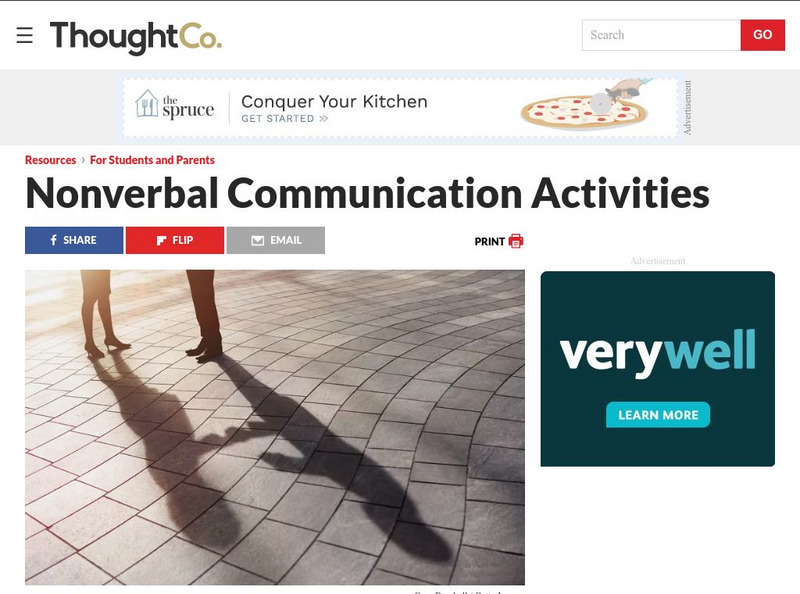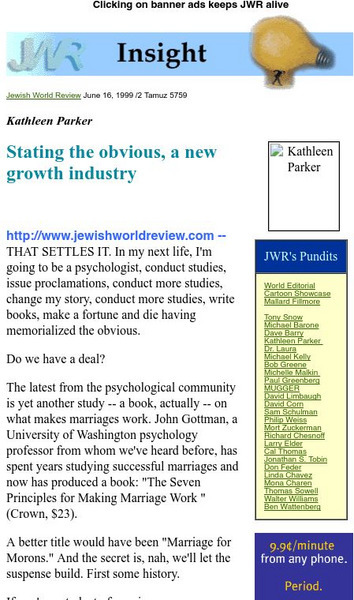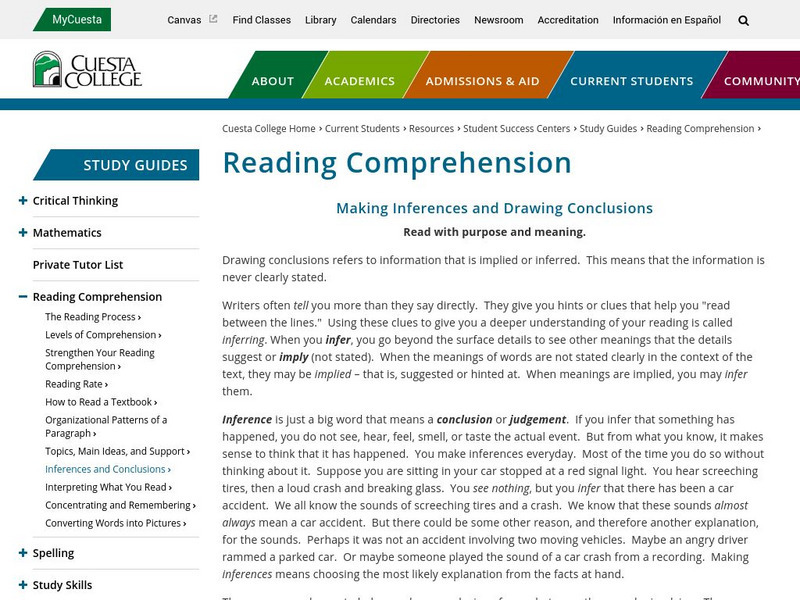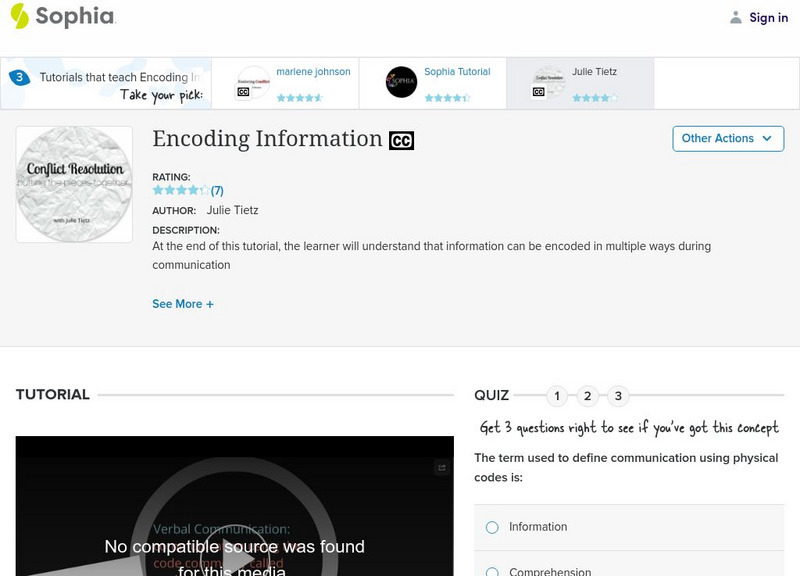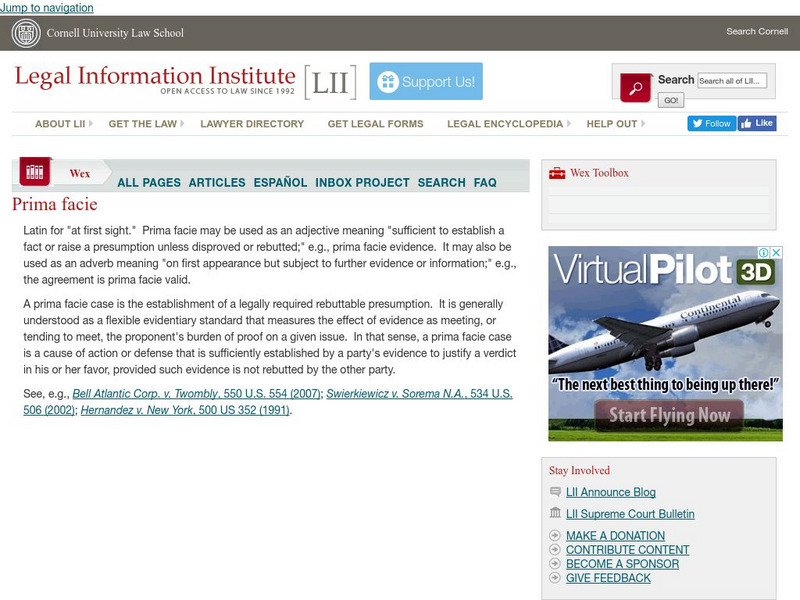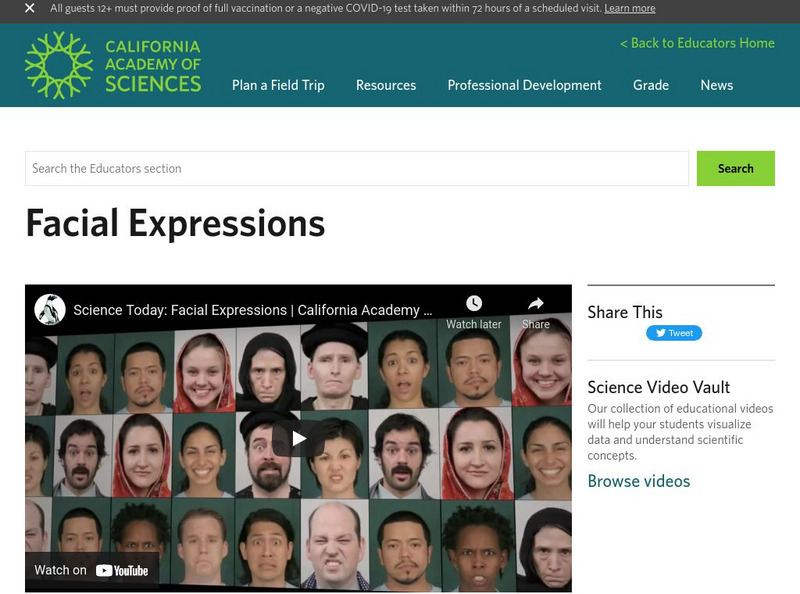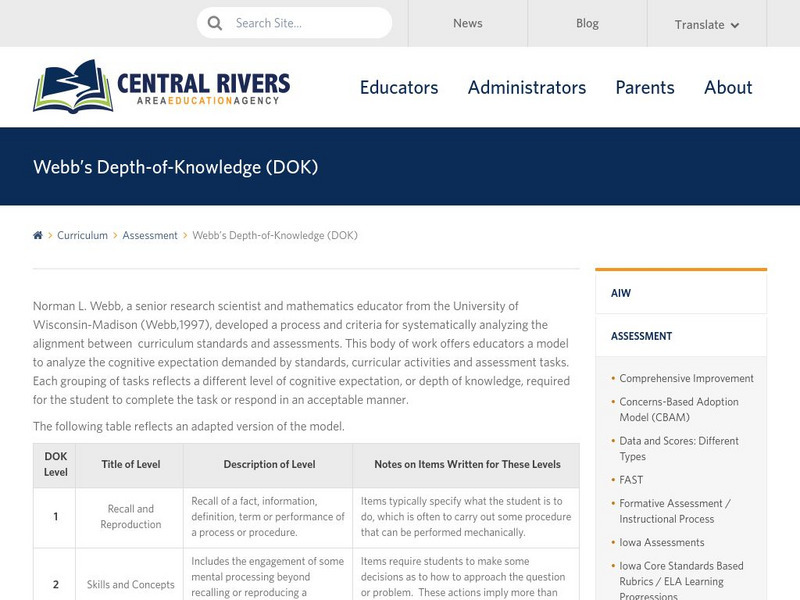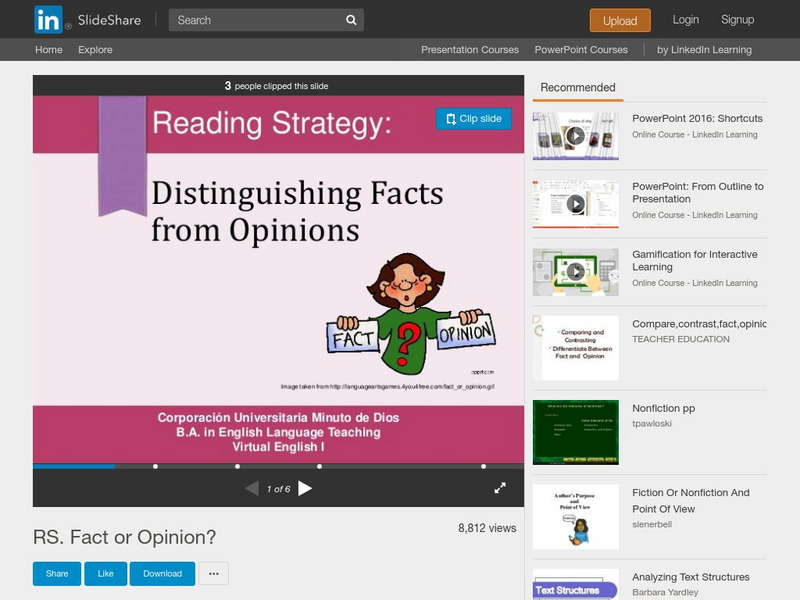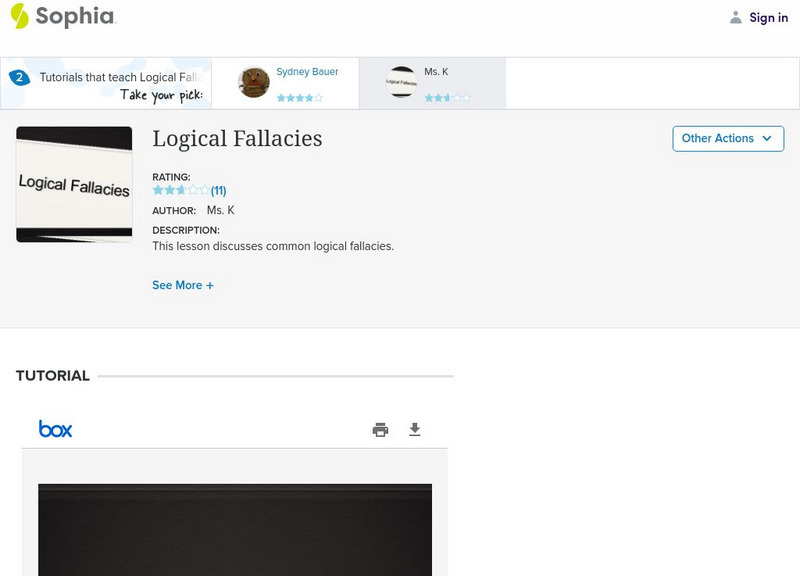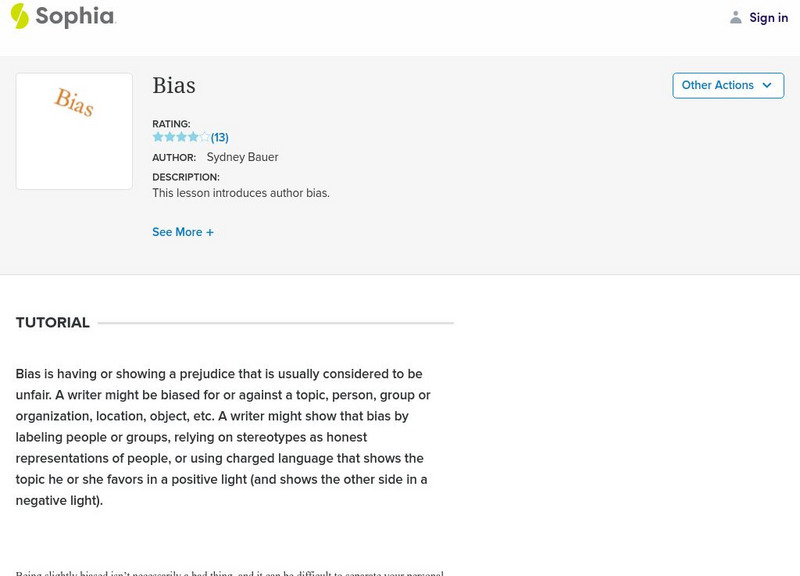BBC
Bbc Skillswise: Fact or Opinion
As part of the BBC's Skillswise unit, this resource covers the basics of separating fact from opinion through a worksheet, a factsheet, and a quiz.
Other
Blackboard: Author's Point of View (Attitude and Tone)
Learn about author's attitude and tone, and see examples of tone used to convey nostalgia, cynicism, and sentiment in a text. This is an excellent resource for helping students identify key words and phrases that give clues about the...
ThoughtCo
Thought Co.: Nonverbal Communication Activities
It's important to be aware of nonverbal communication, so we can avoid sending and receiving unintentional messages through our expressions and body movements. These exercises are designed to help you understand how much information we...
Other
Park View Middle School: Mrs. Marro Sports Argument Writing
Numerous resources are provided to support the instruction of the argument essay.
McGraw Hill
Read: Does Technology Make Us Lazy?
Compare these two passages for some interesting ideas about how technology affects our lives. The questions that follow ask you to identify the main idea from either direct statement or inference.
Other
Jewish World Review: Stating the Obvious
Is empathic listening so obvious as to be moronic? Does it work? Here's a dissenting viewpoint of some of the more popular listening, communication, and interpersonal relationship theories.
University of Pennsylvania
U Penn Library: Dreiser's Critical Reputation
A scholarly paper on Theodore Dreiser's "Sister Carrie" and the problem of using words to communicate as opposed to tone and other non-verbal means.
Quia
Quia: Making Inferences, Summaries, and Conclusions
Read a short text and then choose the correct inference, summary, or conclusion in this Rags to Riches style game.
Other
Cuesta College: Reading Comprehension Guide: Inferences and Conclusions
Explanations and examples of inferences and conclusions in reading and in understanding context clues to define unknown vocabulary.
Other
Wghill.com: Body Language and Non Verbal Communications
This site contains links about body language and non verbal communication skills. The links are about making good body language and non verbal communication skills such as eye contact and smiling.
Sophia Learning
Sophia: Cultural Communication Styles: Lesson 2
At the end of this tutorial, the learner will understand that communication symbols and styles vary in meaning and application between cultures. It is 2 of 3 in the series titled "Cultural Communication Styles."
Sophia Learning
Sophia: Encoding Information: Lesson 2
At the end of this tutorial, the learner will understand that information can be encoded in multiple ways during communication. It is 2 of 3 in the series titled "Encoding Information."
Cornell University
Cornell University: Law School: Prima Facie
This is a legal definition of the term prima facie that includes an example.
California Academy of Sciences
California Academy of Sciences: Facial Expressions
Are facial expressions learned or innate? [2:58]
TES Global
Blendspace: Ethos, Logos, Pathos
A learning module with eight links to images, videos, charts, and assessments about ethos, logos, and pathos.
TES Global
Blendspace: Reasoning, Deduction, and Your Next Speech
A learning module that includes eight links to pictures, websites, and activities for using reasoning and deduction in a speech.
Other
Central Rivers Aea: Webb's Depth of Knowledge (Dok)
This page offers a wealth of downloadable resources for teaching critical thinking skills. Choose the thinking skill you wish to teach, and several .pdf files will be available, including strategies, assessments and student handouts.
Intel Corporation
Showing Evidence Tool: Analyzing and Evaluating Information
If you're looking for a way to engage students in analyzing and evaluating evidence, rather than simply piling up information, this tool may be a boon. Students can use it to construct an argument, rate the quality of resources, and...
Tom Richey
Slide Share: Facts and Opinions
This slideshow focuses on facts and opinions; it provides definitions, examples, and articles for practice.
ClassFlow
Class Flow: Reading Comprehension: Context Clues and Inferences
[Free Registration/Login Required] This reading comprehension flipchart uses Activote and a puzzle to review context clues and inferences. It is intended to review for the FCAT or other state assessment exams.
ClassFlow
Class Flow: Fact and Opinion
[Free Registration/Login Required] Designed for grade 6, this flipchart covers the differences between fact and opinion. Students will analyze statements to determine if they are a fact or if they are an opinion.
ClassFlow
Class Flow: Fact or Opinion
[Free Registration/Login Required] This flipchart reviews the definitions of fact and opinion and gives the students opportunities to sort and identify fact and opinion statements.




